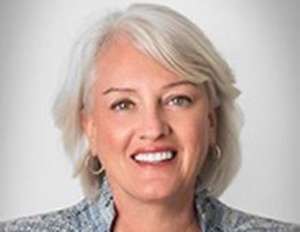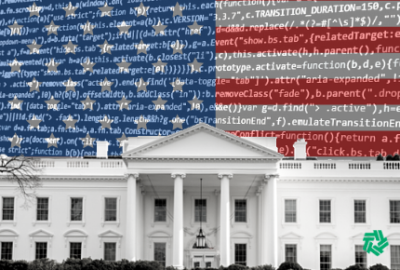TMF leaders say investments must keep pace with growing technical debt challenge
Clare Martorana, the federal chief information officer chairwoman of the Technology Modernization Fund Board, and Raylene Yung, the executive director of the Te...
The Technology Modernization Fund Board expects to award more than $400 million in 2023 and 2024 to agencies needing to boost a specific project.
In its fiscal 2024 request to Congress, the General Services Administration, which runs the TMF board from a budget standpoint, told Congress it estimates the fund would have about $401 million in unobligated funds in 2024, down from $879 million by the end of 2023.
Part of the request is for another $200 million for the TMF to keep whittling away at mounds of technical debt across agencies.

“We focus on trying to understand where agencies are on their IT modernization journey and make the right investments through annual appropriations process, which is really the critical part of this. But TMF is really supplemental to that annual process, and helping put agencies on the right road to building a durable, secure foundation,” said Clare Martorana, chairwoman of the Technology Modernization Fund Board and federal chief information officer, on Ask the CIO. “It’s really a key to digital modernization and transformation. Starting with making sure we understand where each agency is on their IT modernization journey, and then really making sure that we are focusing both on how we can be a catalytic change agent, in partnership with that annual appropriation process.”
Raylene Yung, the executive director of the Technology Modernization Fund, said there is a balance the fund is trying to achieve with agency’s own funding plans and priorities.
“If you look back at all the TMF budget requests over the past five years, the 2024 request is quite in line with those and I think reflects the importance of these funds,” she said. “We’re really pleased to receive congressional support for $50 million in this year’s omnibus. So we believe that the next two years’ request is quite critical to keep pace with the scale and number of investments that we’re making today in the fund. I think with additional funding, we’ll be able to meet the significant demand and continue investing in really complex government-wide IT modernization efforts, as well, at the same time as we scale operations and continue growing.”
A big piece of that success depends on Congress supporting continued TMF investments. Outside of the American Rescue Plan Act, lawmakers support has been tepid at best, allocating about $225 million since 2018.
Martorana said her office and the board are in constant communications with Congress on the investments.
“With every investment that we make, we work really closely with our congressional colleagues to make sure that we are showing the features, the benefits, learning from lessons of certain investments and scaling that learning across our whole portfolio,” she said.
Yung added the program office provides to lawmakers a detailed spending plan with regular updates for investments.

“We really try to outline proactively what’s happening in each investment round, what actually happens when different investments either wrap up or get updates or show progress along the way,” she said. “I think that’s a pretty unique aspect of the program. At this point, almost on a monthly or every other monthly basis, we’ve been able to kind of give these refreshed updates in written form, but also have done regular briefings with our committees as well. We are definitely here to engage, help answer questions and help shine a light on the great impact of these investments that we’re making.”
That impact is most obvious as the Biden administration continues to award or loan out the $1 billion the TMF received under the American Rescue Plan Act in March 2021. Over the last two-plus years, the board invested in 29 projects focused on IT modernization, cybersecurity, customer experience and getting out from under legacy IT.
The two most recent awards, one to the Federal Aviation Administration for $6.43 million and the other to the inspector general’s office in the Department of Health and Human Services for $18 million, fall into two of these four buckets.
With the additional money, the FAA plans to modernize and remediate over 100 legacy applications used to deliver administrative and mission-support services.
“This application rationalization project will reduce technical debt, improve security and migrate critical business applications to an advanced cloud-based platform,” according to the TMF website. “Modernized applications will be zero trust ready and will run on a modern set of programming tools with automated build, test, and deployment capabilities.”
The FAA says it will modernize an initial 22 critical services with TMF funding and support, and then use that operational cost savings to modernize the remaining legacy services.
“Part of this project will include creating an operational playbook the agency can confidently follow in repeating this work after modernizing the initial 22 services,” the website stated.
Another investment in zero trust
As for the HHS OIG, it will use the TMF funding to “implement more secure, zero-trust mechanisms across its network, identity management and security operations and risk management. To architect a zero-trust network, HHS-OIG will update its infrastructure to a secure, cloud-based model aligned with the Secure Access Service Edge (SASE) requirements from the Cybersecurity and Infrastructure Security Agency and national executive orders. Implementing an enterprise identity management solution will enable OIG’s applications to determine the level of access a user should be given to an application and its data. As a result, HHS-OIG will be better positioned to protect the sensitive HHS-OIG data and analytics critical to performing oversight,” according to the TMF website.
This was the TMF Board’s eighth award where zero trust implementation was a key focus area of the investment.
Martorana said the demand from agencies for TMF funding has been clear over the last two years specifically after the $1 billion allocation. She said the change in repayment options as part of the American Rescue Plan Act investment has given agencies more reason to submit proposals.
Yung added her office is working with agencies in new ways so they are more likely to find success in winning investments.
“In the last few years, we’ve meaningfully grown the TMF program, we’ve expanded the board and added new members and obviously added subject matter experts to the team. So that’s given us just an increased ability to engage quite early and often with agencies who are interested in the TMF,” she said. “One concrete example is, previously agencies would submit a proposal and it would go to the board, and they’d have to go through this full process right away. But over the last year, we introduced a new process that enables agencies to get started in a very lightweight, quick way, where sometimes they can take only 15 minutes and submit some basic information and get hands-on advice and support from the PMO, which enables them to kind of really engage more deeply on the work and have a great discussions and conversation with the board.”
The TMF program office now includes experts with backgrounds in customer experience, cybersecurity and general technical support to help agencies take a more agile approach to development.
Martorana said the executives on the board also are focused on ensuring agencies are including change management techniques, human-centered design methodologies and the projects are meeting timing and funding milestones.
“I think that having technologists and all of these experts interrogating a project upfront does a lot. It really benefits an agency’s team to have outside people who might not be as familiar with the subject matter expertise of a project, really being able to ask and focus on the features and benefits. What are the metrics that are going to be focused on like, cost savings and avoidance or time saved by either the end customer, the public or federal employees?” Martorana said. “The board interrogates all of the activities that go into a program before just lifting and shifting something. We’re really interrogating business processes, making sure our data is protected, the systems are consolidated and that their sunset plans for the older systems that are no longer going to be used are in place. Then making sure that we’re really measuring user impact and customer satisfaction. With some of the payment flexibility, I think we are really seeing teams leaning into building a minimally viable product (MVP), validating their technical requirements, making sure that they’re on the right path internally, before they go ahead and try and stand up and build an entire system. They’re doing all of the really rigorous work upfront. We’re really excited, because we can see how that is driving down failure rates.”
Copyright © 2024 Federal News Network. All rights reserved. This website is not intended for users located within the European Economic Area.
Jason Miller is executive editor of Federal News Network and directs news coverage on the people, policy and programs of the federal government.
Follow @jmillerWFED
Related Stories

OMB tells agencies how they can win some of the $1B in the Technology Modernization Fund






